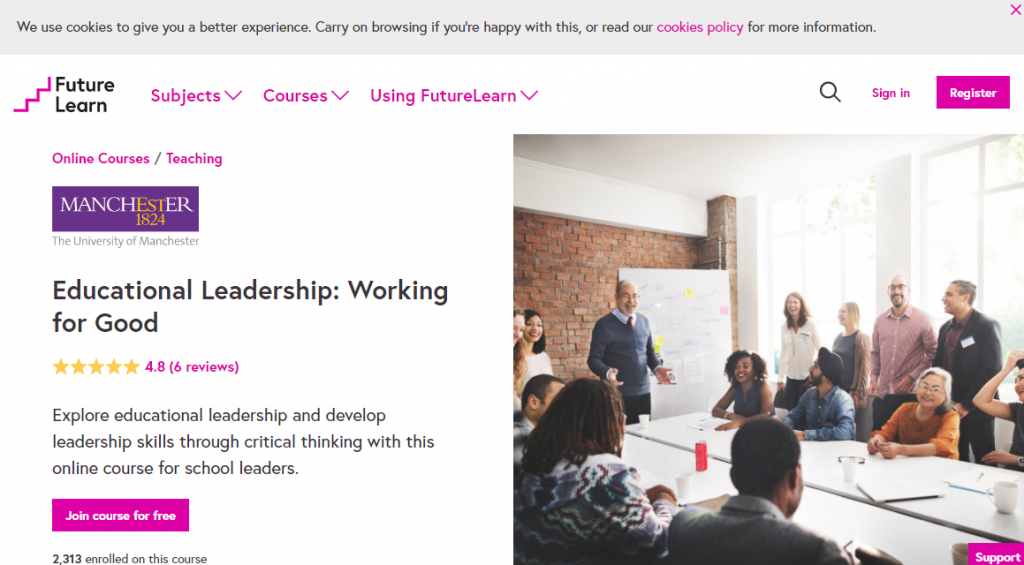
Prep schools, secondary schools that prepare students in preparation for higher education, are called prep schools. They can be public, private, or parochial schools. Prep schools are designed to prepare students for a successful future. Prep schools have different curriculums, but there are common characteristics. Small class sizes, independent learning environment, and Music and fine arts programs are all common features.
Classes with small classes
Smaller classes have many benefits for children. These benefits include greater test scores and student engagement. They also offer increased chances of academic success and continued life success. Socioeconomic factors like decreased crime and dependency on welfare are also affected by smaller classes. Also, students who are in smaller classes have a greater chance of going to college. This is especially true if you are from a low-income family or a group that is underrepresented.
Having smaller class sizes also allows teachers to give more individualized attention to students. Teachers are better equipped to respond to students' questions and needs. Additionally, smaller classes allow teachers to take more time to review student assignments. This gives students more personalized attention, which is essential for learning.

Music and fine arts programs
Prep schools often offer music and fine art programs that foster relationships between students. Many also offer many opportunities for students learning and performing. Depending on the school, students may take beginning, intermediate, or advanced classes. While entry-level courses are designed to teach students basic theory, techniques, intermediate and advanced classes will help them improve their artistic as well as analytical skills.
Some schools not only educate students about their craft but also provide rigorous academics. Baltimore School for the Arts for instance, teaches discipline, artistry, and college preparation courses. It aims to provide graduates with the best foundation for their future. Admission is based on audition and interview. Academic credits are not required for admission, but students who excel in the arts should be motivated to study hard.
Scholarships
For students who are interested in attending prep schools, there are many scholarship opportunities. Most of these schools have their own financial aid department, but there are also external scholarships available. Many schools also offer merit and athletic scholarships. These scholarships may be eligible for an application. Others require a specific GPA and/or athletic achievement.
For students in their junior or senior years of highschool, scholarship funds are available. To be eligible for these awards, students must have a minimum GPA 3.0. These awards can amount to up to $90,000. Although most schools require applications by a specific date, some may not.

Independent learning environment
Independent schools offer students a more personal, multidisciplinary educational environment. Teachers are free to create curriculums that suit their teaching style, students' needs, and personal interests. Additionally, teachers can choose the methods they prefer to evaluate student achievement. Faculty members can also benefit from professional development. Students and instructors can have close relationships because of the small class sizes and low student to teacher ratios. Students also have plenty of opportunities to expand their skills and interests outside of the classroom.
Teachers can be models and encourage independent learning in many different ways. They can give feedback on students' work and help them identify mistakes and build confidence. In order to support their learning, students can receive after-school study assistance. Participation in after-school learning activities demonstrates that students are willing to take charge of their learning goals.
FAQ
What are some ways you can get scholarships?
Scholarships are grants that can be used to pay college costs. There are many kinds of scholarships. These include:
-
Federal Grants
-
State Grants
-
Student Loans
-
Work Study Programs
-
Financial Aid
Federal grants are made directly by the U.S. government. Most federal grants require applicants fulfill certain requirements. To demonstrate financial need, applicants must meet certain requirements.
Individual states can offer grants to state governments. Some states offer state grants based only on financial need. Other states award money for specific reasons.
Banks and lending institutions offer student loans. Students usually borrow money to cover tuition and living costs.
Employers should be encouraged to use work-study programs to help them hire qualified students. Employers must pay their employees at least the minimum wage.
Financial aid can help families with low incomes afford college by covering all or part of tuition costs.
What salary does an early childhood teacher earn? (earning potential)
A teacher in early childhood earns an average salary of $45,000 per annum.
But, salaries in certain areas are more than average. Teachers in large urban school districts are often paid more than teachers in rural schools.
Salaries depend also on factors like the size of a district and whether a teacher has a master’s or doctorate.
Teachers are often paid less than other college graduates, simply because they have little experience. But their earnings can rise significantly over time.
What is the difference between public and private schools?
Public schools are free for all students. They provide education from kindergarten through high schools. Private schools charge tuition fees for each student. They provide education for students from pre-school through college.
There are also charter schools, which are publicly funded but privately run. Charter schools don't use traditional curricula. Instead, they give their students more freedom to learn what interests them.
Charter schools are popular among parents who believe their children should have access to quality education regardless of financial status.
What is an alternate school?
An alternative school is designed to give students with learning problems access to education, by supporting them with qualified teachers who understand their unique needs.
Alternative schools are designed to give children with special education needs the chance to learn in a normal classroom setting.
They are also provided with extra assistance when necessary.
Alternative schools do not exist for students who are exclusion from mainstream schools.
They are accessible to all children, regardless if they have disabilities or abilities.
Statistics
- Among STEM majors, that number is 83.5 percent. (bostonreview.net)
- Think of the rhetorical power of nineteenth-century abolitionist Harriet Beecher Stowe, Martin Luther King, Jr., or Occupy Wall Street activists with their rallying cry of “we are the 99 percent.” (bostonreview.net)
- And, within ten years of graduation, 44.1 percent of 1993 humanities graduates had written to public officials, compared to 30.1 percent of STEM majors. (bostonreview.net)
- In most developed countries, a high proportion of the population (up to 50%) now enters higher education at some time in their lives. (en.wikipedia.org)
- “Children of homeowners are 116% more likely to graduate from college than children of renters of the same age, race, and income. (habitatbroward.org)
External Links
How To
How to get started in homeschooling
Homeschooling is the process of educating children at home, which includes teaching them subjects through different methods such as reading books, watching videos, doing exercises, listening to music, etc. Because it allows students to learn at their own pace, develop skills such as problem-solving and critical thinking, self-discipline and communication, and social skills, it is one of the best ways to learn.
People who wish to educate their children at their home are more common than ever, particularly parents who work full-time but don't have enough time for their children. Homeschooling is an option that allows parents to focus their efforts on their children's education and not have to worry about how to find someone to care for them.
There are many benefits to homeschooling. These include the ability to think critically, creatively, expand their knowledge base and improve their language skills.
Homeschooling is designed to give quality education to students so that they can succeed as adults. However, certain requirements must be fulfilled before starting homeschooling. The first is to find out if your child can attend public or private schools. Consider what curriculum you will use when you start homeschooling. There are many kinds of curricula on the internet that you can choose depending on what your level of knowledge, budget, and preference is. There are many options, including Waldorf, Montessori, Waldorf and Reggio Emilia. Charlotte Mason, unschooling and natural learning. It is also important to have the resources you will need to teach your child. This includes buying textbooks, educational materials and computers. These items may be bought online, or purchased in local stores.
Once you have completed all the steps mentioned above, the next step would be to register yourself as a homeschooling parent. Contact your state department for education to get help. They can help you complete forms and guide you in how to begin homeschooling.